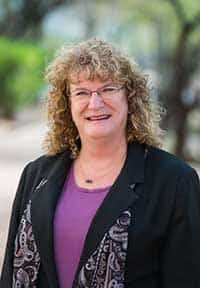 By Sue Menzie, BSN, MS
By Sue Menzie, BSN, MS
Director of Quality Improvement
Usually the terms quality improvement, quality management, and performance improvement evoke some very interesting emotions and responses in the health care industry. For most of my health care career, the Quality Improvement Department was also the “Gotcha” Department. Basically, the department that was always negative and condemning, representing a challenge to show “good numbers” so the organization didn’t end up on anyone’s radar.
Somewhere along the line, my point of view on “quality” changed, as I observed firsthand how compliance failure was actually a quality failure. Then I began to view the Quality Improvement Department as the “protectors” of the health care organization, whose function it was to find solutions so the organization could remain in good standing with regulatory agencies.
Thankfully neither of those two viewpoints describe my current viewpoint, as I came to realize that quality drives excellence and the Quality Improvement Department is really the department that leads the organization in the changes necessary to become a true organization of excellence.
Sierra Tucson has a long history of providing cutting-edge treatment that results in excellent patient and resident care. As health care has changed, it is not just the provision of that cutting-edge treatment, but it is also the documentation of the care that is given that showcases excellence in treatment.
Quality is described as the standard of something as measured against other things of a similar kind; its degree of excellence. Quality at Sierra Tucson is being able to quantify that excellence, measure it, and then inspire, nurture, and drive improvement to showcase it.
To that end, the Quality Improvement Department at Sierra Tucson, which includes quality, risk management, compliance, patient/resident advocacy, and medical records, has made a wide range of improvements that have proven to display the excellence that embodies the treatment at Sierra Tucson.
These improvements include everything from minor issues like chart dividers and permanent file folders (which improved access to documents within the charts), to major projects like audits and surveys. Here are a couple of these projects that highlight that drive to a higher level of excellence:
A multidisciplinary peer review system was implemented this past year, which has improved documentation and systems in each of the clinical departments. Typically peer review is limited to the Medical Department in a health care organization. We expanded peer review to include Nursing, Clinical, and Quality Improvement departments. We asked these divisions to create a quality review based on the areas they wanted to monitor or improve. From a quality improvement standpoint, the review is based on the overall quality of different perspectives of treatment, such as discharge plans. Discharge planning spans multiple departments, so the quality peer review looks at the discharge planning from a more global view.
In the peer review audit process, each department designates a staff member who is able to review the chart from that discipline’s perspective. Charts selected for the peer review process are 100 percent of the charts that comprise our atypical discharges, including AMAs (Against Medical Advice), administrative discharges, medical and psychiatric transfers, and re-admissions to the hospital level of care. Additionally, the chief executive officer, chief medical officer, chief operations officer, or the director of quality improvement can request a chart to be submitted for peer review due to complaints, process or system review, or other related concerns.
Data from the peer review audits is aggregated, analyzed, and reported to our Clinical Quality Committee, which is comprised of representatives of each of the clinical departments and the Quality Improvement Department. As the data is reviewed, the director of quality improvement then identifies trends and requests action plans to address those trends. The committee also discusses these trends in relationship to processes and systems that are in place and determines which improvements can be made to specific areas.
An example of a system-wide improvement that resulted from this process is the documentation of discharge plans. Often, residents would receive a discharge plan from their therapist or continuing care coach, but created their own plan for discharge. Since the discharge planning process spanned multiple departments and functions, the actual final discharge plan was not consistently documented in the chart. The medical team first identified the problem, and then created a form that helped them document their portion of the discharge process. The clinical team followed, using the medical team’s format, creating a discharge note that documented the process from the primary therapist perspective. After a few months, it was clear that the discharge plan/destination was not consistently documented by the nurse (usually one of the last staff members to have contact with a discharging resident), so the Nursing Department, using a combination of the formats from medical and clinical, developed a form that captured the discharge process from the nursing perspective.
Another value of the peer review process is that the reviewers have the opportunity to discuss the cases with each other, and identify cases that might benefit from a review by the medical director. So from the peer review process, we developed the Medical Director Review process, which is a review for practice and/or process and can be triggered by the peer review process or by complaints or concerns. These cases are then reviewed by the medical director of designee, usually a psychiatrist, who can review the case from a practice perspective. These reviews are kept confidential and are used to improve practice and training for staff.
Another project that the Quality Improvement Department has spearheaded is our Resident Satisfaction Survey process. Most health care organizations survey residents’ satisfaction at the end of their treatment experience. While these surveys are helpful as a retrospective review and can be used to drive improvement in the future, they are not effective for intervening in poor patient/resident experiences, nor do they give detailed information specific to departments or processes in individual organizations.
Sierra Tucson is fortunate to have a Quality Coordinator in our Quality Improvement Department, who has developed surveys designed to capture the resident experience. One such survey is the “Mid-Treatment” survey, conducted by our patient advocates, which allows us to keep up to date on the trends of satisfaction in real time. From this survey, other survey tools designed to assist the staff on keeping up with the pulse of resident satisfaction in more definitive areas are developed. This process has resulted in improvements in food service, programming, scheduling of individual sessions, and changes in activities.
Another project we implemented over the past year has been the “Golden Pen Awards,” which are given to clinical, medical, or nursing staff on a monthly basis. Too often we rely too heavily on the monitoring of what is wrong in documentation, forgetting that the rewards are a higher motivator. Each month the Quality Improvement, Risk Management and Utilization Review departments nominate staff members that demonstrate excellence in documentation. The awards include a nomination award or a “Golden Pen Award” certificate and a “gold pen.” While this monthly award system seems a bit simplistic, it has prompted staff to ask how they can improve their documentation and demonstrate excellence. Since May, there have been over 60 staff nominations for this award, resulting in some positive energy around the entire process.
The goal of the Quality Improvement Department at Sierra Tucson is to provide a foundation of quality upon which to build a resident’s experience. All of our individual efforts, combined with our team efforts, are focused on improving quality to drive excellence.



